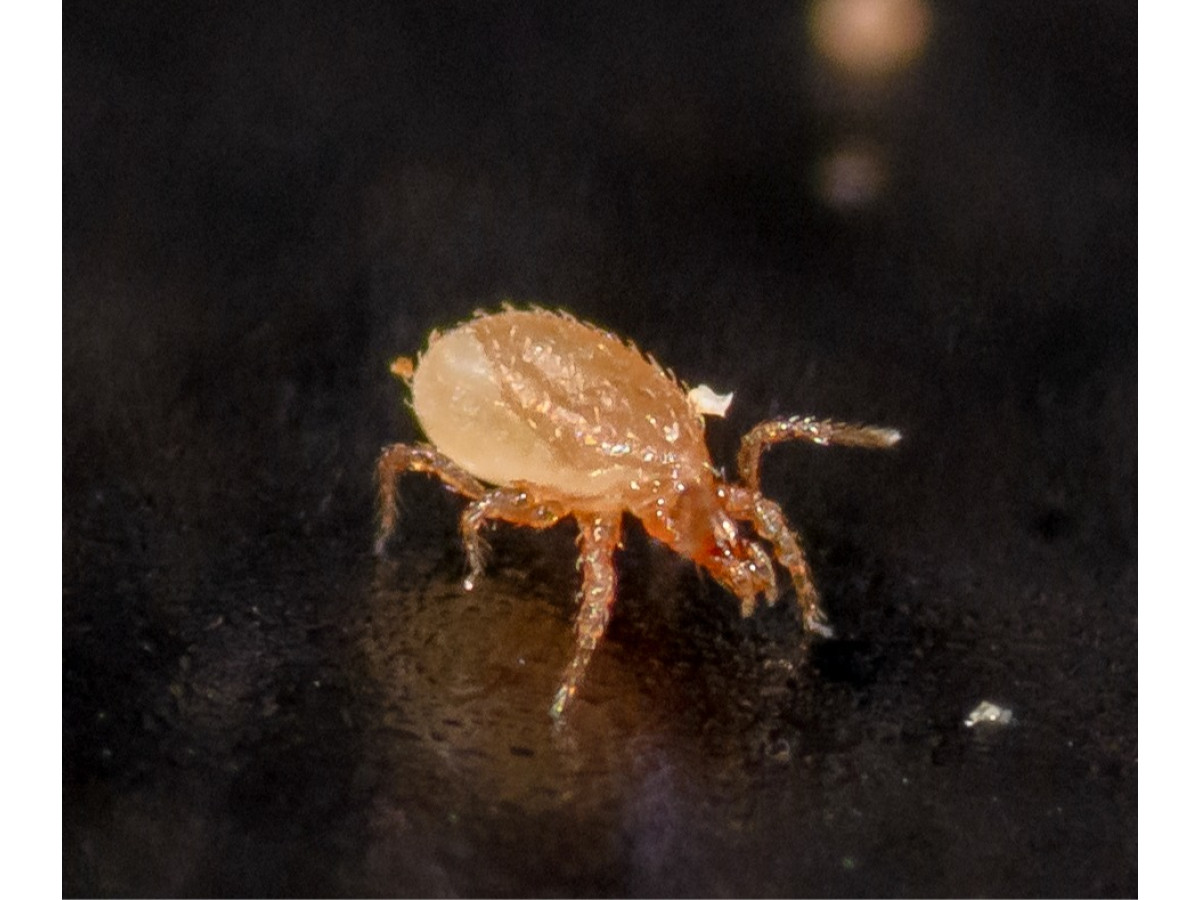Przez długi czas drapieżny roztocze nosił nazwę Hypoaspis miles, ale zgodnie z najnowszymi zmianami w systematyce otrzymał inną nazwę - Stratiolaelaps scimitus. Jednak wśród specjalistów z zakresu kontroli biologicznej nazwa Hypoaspis miles wciąż jest bardziej popularna.
W naturalnym środowisku Hypoaspis żywi się różnymi owadami glebowymi i ich larwami. Dla agrobiznesu drapieżnik jest interesujący, ponieważ wśród jego ofiar znajdują się larwy muchówek grzybowych, muchówek i tripsów, a także glebowe mszyce.
Drapieżnik ma wielkość do 1 mm i brązowe zabarwienie ciała. W warunkach naturalnych zamieszkuje górny warstw gleby (do 4 cm w głębokości), ale można go także znaleźć na powierzchni roślinnych resztek. W warunkach produkcyjnych przemieszcza się także po sztucznym podłożu, a także po powierzchni doniczek, półek itp.
Składanie jaj odbywa się w wilgotnej glebie, torfie lub warstwie organicznych resztek. Dlatego obecność takiego podłoża w obszarze produkcyjnym jest konieczna, jeśli producent rolny planuje stworzyć stabilną i długotrwałą populację tego drapieżnika.
Tempo wzrostu jego populacji zależy od warunków temperaturowych. Przy 10°C i poniżej rozwój roztocza jest wstrzymywany. Przy 15°C rozwija się przez okres do 5 tygodni, podczas gdy przy 24°C cykl życiowy skraca się do 2 tygodni. Jednakże temperatura 32°C i wyższa hamuje rozwój populacji.
Podczas rozwoju drapieżnik przechodzi przez trzy stadium nimfalne. Po złożeniu jaj w standardowej temperaturze 20°C larwy pierwszego stadium wychodzą z jaj po 6 dniach. Po kilku dniach następuje drugie stadium - protonimfa, której następuje trzecie - deutonimfa. Ten okres z dwóch stadium trwa około 10 dni, podczas których młode roztocza aktywnie się żywią. Przy 20°C ogólny okres rozwoju od jaja do dorosłej jednostki wynosi 17-18 dni, przy wystarczającej liczbie ofiar.
Dorosły Hypoaspis jest w stanie zniszczyć do 8 larw muchówek pierwszego stadium dziennie. Jednak podczas polowania na bardziej zaawansowane larwalne stadium jego efektywność spada. Na przykład drapieżnik jest w stanie atakować nie więcej niż jedną larwę 4 stadium dziennie.
Ważną cechą Hypoaspis jest jego zdolność do atakowania larw tripsów, które opadają na podłoże do wylinki. Wśród jego ofiar znajduje się też zachodni kwiatowy trips (Frankliniella occidentalis). Należy pamiętać, że walka z tripsami to proces kompleksowy, a Hypoaspis jest jednym z jego elementów. Jest jednak przydatny w tym zakresie, ponieważ jego stosowanie łatwo łączy się z innymi środkami kontroli biologicznej tripsa, w tym z pasożytniczymi nicieniami.
Ponieważ większość pestycydów jest stosowana na masę roślinną, a Hypoaspis mieszka w podłożu, prawdopodobieństwo kontaktu z nimi jest niewielkie. Ta właściwość pozwala łączyć go z użyciem wielu chemicznych środków ochrony roślin, ale nie jest kompatybilny z pestycydami gruntowymi.
Standardy stosowania Hypoaspis są bardzo szerokie, zależą od sytuacji na uprawie i mogą się wahać od 100 do 1000 osobników/m².
Standardową dawką profilaktyczną jest 50-100 osobników/m².
W przypadku wykrycia tripsa lub innych szkodników na uprawie norma uwalniania wynosi 250-300 osobników/m².
Jeśli populacja osiągnie wysoki poziom, norma ta może sięgnąć 500-1000 osobników/m².
Najlepiej stosować drapieżnika profilaktycznie lub przy niskim poziomie populacji szkodników. Wprowadza się go do podłoża, kompostu lub bezpośrednio na sześcianek wełny mineralnej, gdzie od razu zaczyna szukać pożywienia. Jeśli pod półkami znajdują się otwarte obszary gleby lub innego podłoża, należy tam również wprowadzić drapieżnika, ponieważ może być tam zasiedlony przez szkodniki.
Stabilność populacji Hypoaspis wynika z długiej żywotności drapieżnika, która może wynosić kilka miesięcy. Nawet w przypadku braku pokarmu jednostki Hypoaspis są w stanie żyć do 7 tygodni. Jest przydatny do stosowania na roślinach o długim okresie obróbki, na przykład na roślinach ozdobnych.
Preparaty na bazie Hypoaspis przechowywane są przez krótki czas, zwykle nie dłużej niż 48 godzin po otrzymaniu, w temperaturze 12 - 18°C. Hypoaspis to roztocze miłujące wilgoć, więc aby uniknąć wysychania nośnika, należy przechowywać go przy podwyższonej wilgotności.
W ostatnich latach pojawiły się próby wykorzystania Hypoaspis w pszczelarstwie do walki z pasożytami pszczoły miodnej - roztoczami warrozy. Krótko mówiąc, potencjał tego drapieżnika wciąż nie został w pełni wykorzystany, a dalsze rozwinięcie technologiczne znajdzie dla niego nowe zastosowanie.

Napisz komentarz